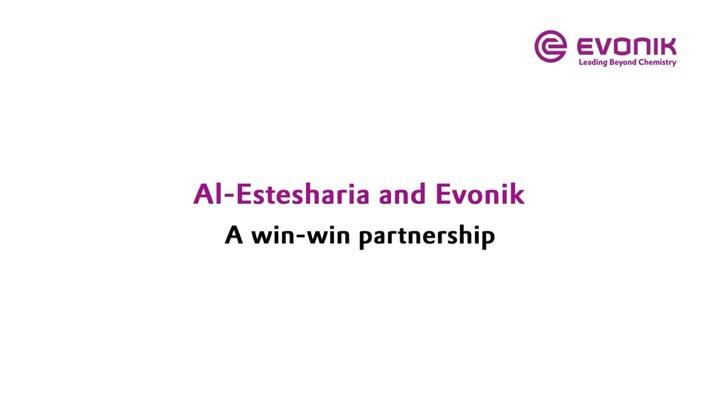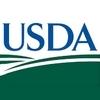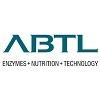Check out what is new in Poultry Industry
Find the best technical articles, forums, and videos on Poultry Industry at Engormix. Enter now and interact with the world's largest agricultural social network.
.jpg&w=3840&q=75)
Fernanda Castro, Technical Service Manager at Evonik, talked about the importance of methionine sources and crude protein on broilers diets, during this Engormix interview....
Comments : 0
Recommendations: 0

Learn more about our journey with Premix company Al-Estesharia, who we partnered with in 2015 to provide reliable solutions and services that meet their needs and the needs of customers throughout the supply chain, supporting them and the market to grow further.
...
Comments : 0
Recommendations: 0
INTRODUCTION Reducing the production cost of quality meat and eggs for the ever-growing world population is a prime target of the poultry industry. Conventional feed ingredients like corn and soybean meal are widely used in broiler feeding programs, which increase the competition among food and feed and lead to raise production costs (Donohue and Cunningham, 2009; Stefanello et al., 2016). Several strategies were attempted to minimize the cost per unit production, such as...
Comments : 0
Recommendations: 0
INTRODUCTION In the modern poultry production system, the first reported chick embryos injection of thiourea was done by Grossowicz in 1946 to observe the effect in hatchling and post-hatch life (1), followed by thyroxin by Balaban and Hill (2). Later, in ovo technique (IOT) was first opted for vaccination against Marek’s disease by Sharma and Burmester (3). Subsequently, the success of in ovo vaccination (IOV) has set forth a paradigm shift in the poultry industry by adapting...
Comments : 1
Recommendations: 0
Introduction Antimicrobial Resistance (AMR), which is the ability of microorganisms to withstand attack by antimicrobial drugs, is a global health problem related to several factors, including bacterial genetics and the human, veterinary and agricultural usage of antibiotics (Marston et al., 2016). Among important antimicrobials, tetracycline, which is a broad-spectrum antimicrobial that acts against Gram-positive and Gram-negative bacteria (Marosevic et al., 2017), has been...
Comments : 0
Recommendations: 0
1. Introduction A major challenge for public health is the increment in resistance to common antimicrobial compounds. Consequently, antimicrobial resistance (AMR) is regarded as a priority, and the main goals of the World Health Organization (WHO) aim at containing this problem [1,2]. Microorganisms can develop resistance to antimicrobial agents. In bacteria, for instance, antibiotic resistance traits can arise from mutations in the genome [3], which can then be mobilized...
Comments : 0
Recommendations: 0
Introduction In Syria chicken occupies a major place in production and consumption among poultry. It has become the second most popular meat eaten and is most likely to maintain this position. Chicken meat is a good source of protein and many nutrients, and is relatively low in fat, especially if the skin is removed. Chicken meat is also characterized by versatility in menu planning, ease of preparation, consistent quality, and the availability of wide range of pre-packaged, branded,...
Comments : 0
Recommendations: 0
INTRODUCTION The World Health Organization recognizes antimicrobial resistance (AMR) as a major health threat in the 21st century (1). A global projection predicts that the increase of deaths linked to AMR will develop from 700,000 in 2016 to 10 million deaths per year in 2050 while 100 trillion USD could be lost by 2050 (2). In this scenario, the use of antibiotics in food animal production is one of the most important issues contributing to the AMR crisis. In fact, over 50% of...
Comments : 0
Recommendations: 0
INTRODUCTION The introduction of antibiotics has revolutionized medicine, providing effective treatment for infectious diseases that were once fatal and enabling modern medicine, such as surgery and organ transplantation. Widespread resistance development thwarts the effectiveness and lifespan of antibiotics, calling for the discovery of new drugs in the perpetual standoff against human pathogens. Most antibiotics used in the clinic originate from natural product scaffolds that...
Comments : 0
Recommendations: 0
1 Introduction By 2050, the world’s population is predicted to increase to 9.8 billion people, threatening food security and causing shifts in consumer purchasing patterns (1, 2). Animal-derived meat products are central to the current food supply, accounting for 40% of the agricultural production value and 13% of the calories consumed globally. Furthermore, based on consumer patterns meat consumption is predicted to increase by between 62% to 144% by 2050, with...
Comments : 0
Recommendations: 1
Introduction Every animal production system experiences stress because of the numerous stressors on the farms. Stress is a biologically adaptive response to re-establish homeostasis (1). Heat stress is a variant of environmental stress caused by an increase in environmental temperature (and humidity) beyond the thermotolerance of an animal. Poultry birds possess a narrow range of thermoregulatory thresholds and are sensitive to environmental temperatures, which can pose as a...
Comments : 0
Recommendations: 3
1. Introduction Salmonella enterica has emerged across the globe as a threat to health systems [1]. Serovars of this species can infect humans, causing diverse effects varying from typhoid fever to gastroenteritis [2]. Non-typhoidal Salmonella (NTS) is associated with millions of infections and thousands of deaths annually around the globe [3,4]. S. Typhimurium and S. Enteritidis are considered the principal serovars associated with human infections; nevertheless, S. enterica subsp....
Comments : 0
Recommendations: 0
1. Introduction Antimicrobial resistance (AMR) is one of the top 10 global threats to public health and is thought to be partly driven by the widespread use of antibiotics in food-producing animals (WHO, 2021). Globally, a greater proportion of the tonnage of all antibiotics sold are for use in food-producing animal sectors compared to for use in humans (Van Boeckel et al., 2017). In 2017, an estimated 93 million kilograms of active ingredient were sold worldwide for use in...
Comments : 0
Recommendations: 0
INTRODUCTION Demand for poultry source foods is increasing, particularly in developing countries (1), and this is driven primarily by population growth (2, 3). To keep pace with the growing request for poultry products, farmers now use antibiotics at minute doses to reduce the incidence of enteric pathogens, improve feed conversion ratio (FCR) and body weight gain (BWG) in broiler chickens (4). Despite the significant economic benefit of AGPs in large-scale broiler production, their...
Comments : 0
Recommendations: 1
INTRODUCTION Consumer preferences are leading to changes throughout the poultry industry (Northcutt and Jones, 2004; Fanatico et al., 2005; Meneses et al., 2017). From 2016 to 2017 the amount of organic poultry production has increased by 76%, holding a 2016 market share of $750 million (Philips, 2017). This is compared to an increase of the total organic agricultural farming market share which rose only 23% (Philips, 2017). This is partially influenced by consumers believing the...
Comments : 0
Recommendations: 1
.jpg&w=3840&q=75)
Kurt Wegleitner, Managing Director of Phytobiotics, highlights key takeaways from the IQ Seminar 2023, which took place in Germany....
Comments : 0
Recommendations: 1
1 | INTRODUCTION Due to the impact of climatic changes and other global events such as conflict, the Covid‐19 pandemic, recession, and supply chain issues, conventional feed ingredient prices are continually increasing. The effect of these constraints is felt largely in developing countries that are coming under huge pressure to source raw materials such as corn and soybean meal (Abro et al., 2020). The search for alternative feed ingredients to sustain the livestock...
Comments : 0
Recommendations: 1
Introduction The concept of maintenance has been defined as the state of balance between the intake of nutrients and their inevitable losses (Siqueira et al., 2011; Silva et al., 2014; Soares et al., 2019). That contributes to an understanding of the differences in responses between individuals of a population and enhances the requirements concept. Different methodologies have been developed to estimate nitrogen and amino acid requirements for maintenance (Burnham and Gous, 1992;...
Comments : 0
Recommendations: 0
Heat stress is a huge problem in farm animals, as their welfare and performance can be negatively affected by extreme environmental conditions. When animals are exposed to very high or low temperatures outside their comfort range, they might experience heat stress. This can bring about various unfavorable consequences, such as decreased food intake, reduced zootechnical performance, alterations in the immune system, and increased susceptibility to diseases. Mechanisms through which...
Comments : 5
Recommendations: 3
Introduction Poultry, due to its genetic, nutritional and managemental upgradation have become a source for quick productivity. But, skyrocketing conventional ingredients, fluctuating managemental conditions, and other quality parameters of rearing birds, farmer...
Comments : 1
Recommendations: 0







.jpg&w=3840&q=75)




.jpg&w=3840&q=75)



















